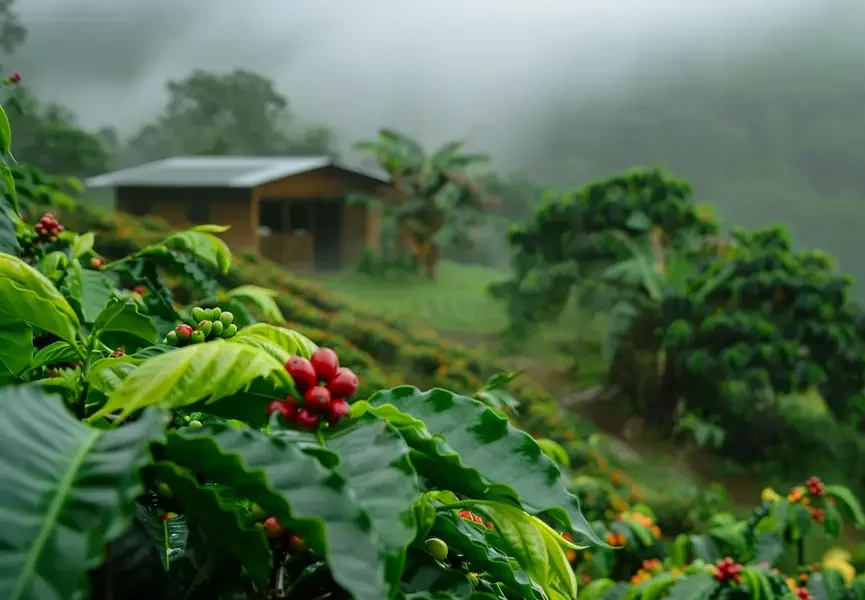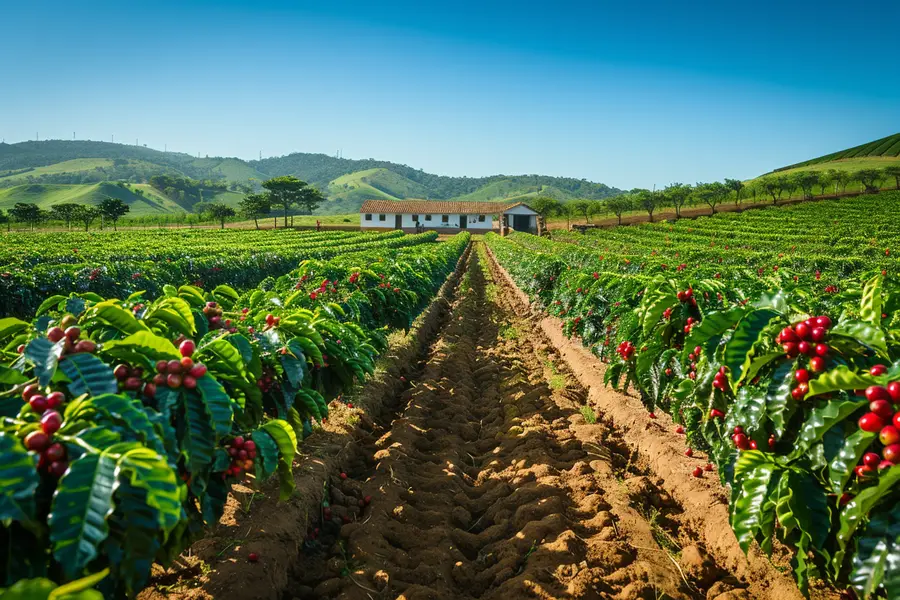Coffee Farms
When you enjoy your morning cup of coffee from Ostova Coffee, it’s easy to forget the incredible journey those beans have taken from farm to cup. At Ostova Coffee, we celebrate the origins of every bean, honoring the hard work and dedication of coffee farmers around the globe. In this post, we’ll delve into the fascinating world of coffee farms, exploring how these verdant sanctuaries of coffee cultivation play a crucial role in creating the perfect brew.
The Geography of Coffee Farming
Coffee farms are typically located within the “Bean Belt,” a region that stretches between the Tropics of Cancer and Capricorn. This belt includes parts of Central and South America, Africa, and Asia, where the combination of altitude, climate, and soil conditions create the perfect environment for growing coffee.

“The Bean Belt: This region, spanning the Tropics of Cancer and Capricorn, is ideal for coffee cultivation due to its perfect combination of altitude, climate, and soil conditions.”
Key Coffee Growing Regions
South America: Countries like Brazil and Colombia dominate the coffee scene with vast plantations that produce a significant portion of the world’s coffee. These regions are known for their rich, full-bodied beans with diverse flavor profiles.
Africa: Ethiopia and Kenya are renowned for their unique and complex coffees. Ethiopian beans often boast floral and fruity notes, while Kenyan coffee is celebrated for its bright acidity and bold flavors.
Asia: Countries like Vietnam, Indonesia, and India contribute distinct flavors to the coffee world. Indonesian coffee, for example, is often earthy and full-bodied, while Vietnamese coffee is known for its robust, intense character.

A beautiful coffee farm in Brazil. These farms benefit from rich, volcanic soil and favorable climate conditions, producing some of the world’s best coffee beans.
The Coffee Plant: A Labor of Love
The journey of a coffee bean begins with the planting of a coffee seed. Farmers typically grow seedlings in nurseries until they are strong enough to be transplanted into the fields. It takes about three to four years for coffee plants to mature and start producing cherries.
The Lifecycle of a Coffee Plant
Planting: Coffee seeds are planted in shaded nurseries where they are nurtured for several months before being moved to the fields.
Growing: Coffee plants thrive in rich, volcanic soil and at altitudes ranging from 600 to 1,800 meters. The plants need consistent rainfall and temperatures between 60-70°F (15-24°C).
Harvesting: Depending on the region, coffee cherries are harvested once or twice a year. Harvesting is often done by hand, ensuring only the ripest cherries are picked.
Harvesting
Harvesting coffee cherries is a labor-intensive process that requires skill and precision. There are two main methods:
Selective Picking: This method involves hand-picking only the ripe cherries, ensuring the highest quality beans. It is time-consuming and often requires multiple passes through the coffee trees.
Strip Picking: In this method, all cherries are harvested at once, regardless of ripeness. This is faster but usually requires additional sorting to separate ripe beans from unripe ones.
The Journey from Cherry to Bean
Once harvested, coffee cherries need to be processed to extract the beans. There are three primary methods of processing:
Dry Processing: Cherries are spread out in the sun to dry. This method, used in regions with limited water, enhances the fruitiness and body of the beans.
Wet Processing: Cherries are pulped, and the beans are fermented in water to remove the mucilage. This method produces a cleaner, brighter cup with higher acidity.
Honey Processing: A hybrid method where some of the mucilage is left on the beans during drying. This results in a sweet, complex flavor profile.
Drying, Milling, and Sorting
After processing, the beans are dried to reduce moisture content to about 10-12%. They are then milled to remove the parchment layer and sorted based on size, weight, and quality. This step ensures consistency and prepares the beans for roasting.
Coffee Roasting and Brewing
Once sorted, green coffee beans are shipped to roasters worldwide. Roasting transforms the beans, developing their flavors through careful control of temperature and time. Finally, these roasted beans make their way to your kitchen, ready to be brewed into a delicious cup of coffee.
A Tribute to Coffee Farmers
The journey of coffee from farm to cup is a testament to the dedication and expertise of coffee farmers. Their thoughful care, traditional practices, and innovative techniques are what make each cup of coffee from Ostova Coffee so special. We honor these farmers and their invaluable contribution to the coffee industry.
Next time you enjoy your brew from Ostova Coffee, take a moment to appreciate the intricate process that brought those beans to your cup. Behind every sip lies a world of passion, hard work, and a commitment to quality that spans continents and cultures. Cheers to the farmers who make it all possible!

